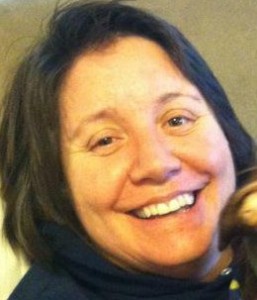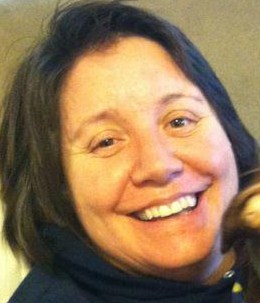Slouching Toward Redundancy…and also Bethlehem – Donna Simon
 In the summer of 2009, eager to take advantage of the $8000 President Obama was offering to first time homebuyers, I started looking at houses in Kansas City. I had been serving a church here—Abiding Peace Lutheran—for nine years, and it looked like I might be staying. So I looked at houses. A lot of houses. As leaves began to fall, I realized that I had toured over fifty houses, and still I had not found “the one.” My girlfriend, who is now my wife (thank you, Iowa), came from Virginia, where she still lived, to check out the latest candidates. As we looked over the map of homes for sale in the KC Metro, she pointed to a couple of places on the map and asked “Why aren’t we looking at any of those?” “Those” homes were in the parts of Kansas City with slightly higher crime rates and much more racial diversity. There was no good answer for why we weren’t looking at “those,” so we looked at some.
In the summer of 2009, eager to take advantage of the $8000 President Obama was offering to first time homebuyers, I started looking at houses in Kansas City. I had been serving a church here—Abiding Peace Lutheran—for nine years, and it looked like I might be staying. So I looked at houses. A lot of houses. As leaves began to fall, I realized that I had toured over fifty houses, and still I had not found “the one.” My girlfriend, who is now my wife (thank you, Iowa), came from Virginia, where she still lived, to check out the latest candidates. As we looked over the map of homes for sale in the KC Metro, she pointed to a couple of places on the map and asked “Why aren’t we looking at any of those?” “Those” homes were in the parts of Kansas City with slightly higher crime rates and much more racial diversity. There was no good answer for why we weren’t looking at “those,” so we looked at some.
When I pulled up in front of our house, I knew it was our house. It was even the color I wanted—green—and sure you don’t buy a house for the color, but it didn’t hurt that the house had everything we wanted, including a sweet kitchen with new appliances and enough space for two cooks. And also it was green. So we bought it, even though it was on the “wrong” side of Troost Avenue. You don’t have to be from Kansas City to understand what I mean by that. There’s probably a Troost where you live. We couldn’t be happier to be on the wrong side, which you might have surmised already if you did the math and put together “married lesbian Lutheran pastor.” Home has always been on the wrong side.
Even better than being green, the house came with a church. St. Mark Lutheran Church, the granddaddy of Kansas City Lutheran churches, is two short blocks from our house. St. Mark was born in 1867 in downtown Kansas City. It outgrew three buildings before moving to the quasi-suburban splendor of Troost Avenue in 1916. The church continued to grow for many years, until the white flight and disinvestment of the sixties and seventies devastated this part of town. What is now the heart of the city is also a land of boarded buildings and empty storefronts. St. Mark Lutheran Church survived, but it was not easy. By 2009, the congregation remained open due entirely to the tenacity of a handful of members, one of whom had a checkbook. There hadn’t been a called pastor at St. Mark for a decade.
I wasn’t looking for a church, and didn’t want to leave the church I was serving, so I didn’t know I had found a new church at first. My plan was just to provide a little pastoral supply for them so that they could do midweek worship in Advent…and then in Lent…and by then the Lord had made it clear that the house came with a church.
A lot of stuff happened in between that realization and the merger—a lot of prayer and a little struggle—but in March of 2011, Abiding Peace joined St. Mark’s in the city, and St. Mark Hope and Peace Lutheran Church was born. The name fills up a letterhead, but we like to think that it does double duty: it is a name and a mission: “building hope and proclaiming peace.” We like to think that it is our mission…and now we’re getting close to the point of this long story.
I was not trained as an urban pastor. I was not trained for the utterly changed landscape of the contemporary church. I went to a mainline seminary (a fine seminary of the Graduate Theological Union in Berkeley, California) and like most of my colleagues in seminary in the nineties, I learned to be a pastor in Christendom, and to mostly ignore the voices crying out that Christendom was over. So when God called me into this challenging ministry in a part of the city wholly uninterested in traditional Lutheranism, I knew I would need help. I wanted to do a PhD, but I’m a miserable slacker who actually needs sleep every day. And I was still waiting tables twenty hours a week to help pay for the green house. It would be a Doctor of Ministry, which would be structured for someone working full time. Or time and a half, like most of the pastors I know.
The search for an appropriate Doctor of Ministry program turned out to be only slightly less difficult than the search for our house. I wanted something challenging, which eliminated more programs than I care to mention. I expanded the search a couple of times, finally looking at “those” seminaries where I was less certain of being welcome. These included Luther Seminary in St. Paul, Minnesota, a seminary of my denomination where a few of my friends had struggled for acceptance (and one was blocked from attendance). I was still harboring a grudge on their behalf, so I hadn’t looked at Luther, which, it turns out, has a pretty great D.Min. program in Congregational Mission and Leadership. And which is a much more welcoming place these days, since our denomination decided, back in the great year that was 2009 to ordain gay and lesbian folk.
I applied, was accepted, and began to delve into The Missional Church with an amazing cohort of bright and passionate pastors from three traditions (ELCA Lutheran, United Methodist, Christian Reformed). This week at Ecclesio, we’ll do our own delving into the Missional Church conversation, and the hope for missional leadership for this interesting time in the life of The Church.
As I look back over where we’ve been—my church, my family, our community—it occurs to me that the name of this movement is redundant. By its own central tenets, it is a redundant movement. “God has a mission. God’s mission has a church.” Hang around these Missional Church folks long enough, and you will hear that trope.
Hang around the church long enough, and you will live it. God will send you to the city to live in a green house and work in a big old stone church. God will breathe new life into the community in and around that church and begin to collapse the walls between the two. (Just the metaphoric walls. Contrary to oft-repeated rumor, the actual walls of our church are quite fine.) And you will learn that “building hope and proclaiming peace” isn’t your church’s mission—it is God’s. Your mission is to follow God into all the places where God is building and proclaiming. If you are a leader in the church (lay, ordained, commissioned—you know, a leader), then your mission is to help others discover where God is building and proclaiming, connect to it and join in it and love it.
In other words, the task of being missional in the church—which is already missional, by its very nature—is to connect people to the palpable reality of incarnation. It’s a big task, especially since we are working against a few generations of idealizing the church and our own power to create and distribute mission. But we’ll figure it out this week.
Or maybe next.
Pastor Donna Simon is a Midwesterner by birth (and temperament), though she has spent much of her life on the West Coast. She is a graduate of San Francisco State University (English Literature) and Pacific Lutheran Theological Seminary in Berkeley, California. She is in the third year of the Doctor of Ministry program in Congregational Mission and Leadership at Luther Seminary, St. Paul, Minnesota. Donna is pastor at St. Mark Hope and Peace Lutheran Church, an inner city parish in Kansas City, Missouri. St. Mark Hope and Peace has engaged in a process of intentional renewal, seeking to engage with what God is doing in the midtown area of Kansas City and beyond. The congregation worships in a beautiful old stone church on Troost Avenue, but their ministry is located in many places. Donna lives in the parish she serves with her wife, Colleen, three dogs and three cats, all of them rescued from the mean streets of KC.


Neat story Donna! I always assumed that you were an urban pastor, you’ve always seemed to be at home in your role. It’s a pleasure sharing space with you in ministry.